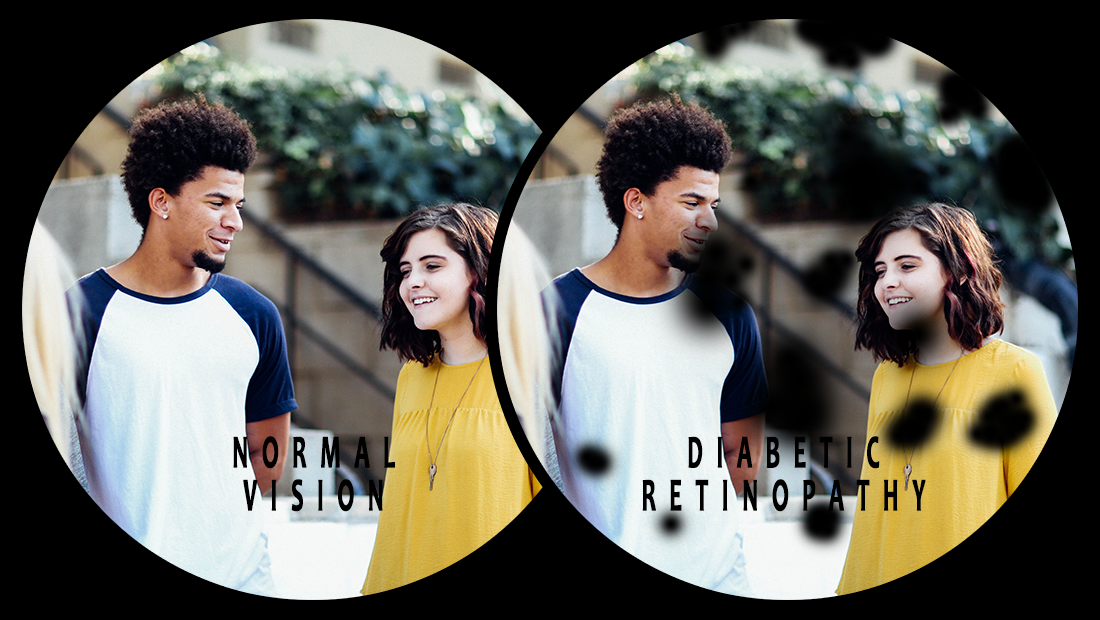DIABETES AFFECTS PEOPLE OF ALL AGES, RACES, AND NATIONALITIES
Of the almost 20 million people in the United States with diabetes, almost half of those will eventually develop some sort of diabetic eye disease.
Diabetes primarily affects the blood vessels in the retina which is very sensitive to oxygen flow. These vessels work like tubes, bringing oxygen and other nutrients into and out of the eye. Damage to these vessels is called diabetic retinopathy where blood is leaked out from these weak vessels. Diabetic retinopathy develops gradually and painlessly. Clarityof vision fluctuates as the blood sugar level in the blood system changes. Permanent vision damage can occur if blood leaks and damages the macular(the tissue responsible for clear central vision).
Although good control of your blood sugar and blood pressure can help prevent diabetic eye disease, significant problems can still occur. Annual dialted retinal examinations is the best way to diagnose and detect problems early, before vision loss occurs.
WHO IS AT RISK FOR DIABETIC RETINOPATHY?
All people with diabetes–both type 1 and type 2–are at risk. That’s why everyone with diabetes should get a comprehensive dilated eye exam at least once a year. The longer someone has diabetes, the more likely he or she will get diabetic retinopathy. Between 40 to 45 percent of Americans diagnosed with diabetes have some stage of diabetic retinopathy. If you have diabetic retinopathy, your doctor can recommend treatment to help prevent its progression.



